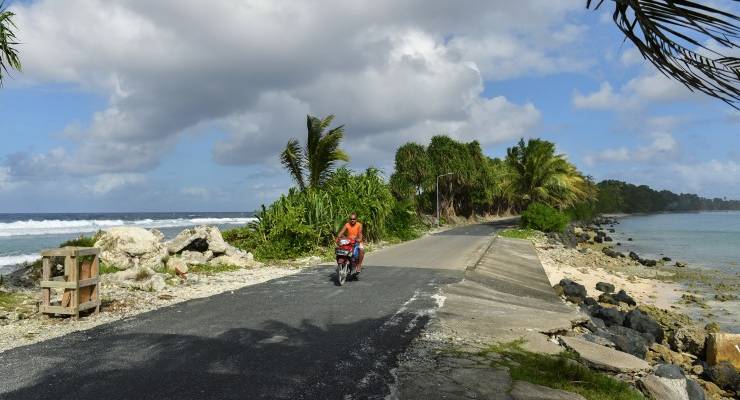
In the budget, overseas development aid (ODA) sits at $4 billion, down from $4.04 billion last year. It’s also the seventh year in a row it has dropped.
But there’s an extra $304.7 million to go towards the COVID-19 recovery fund for the Pacific and Timor-Leste. This, experts say, is undoubtedly ODA, so why hasn’t it been classified as such?
What’s available?
ODA makes up just 0.6% of total government expenditure — Australia is the least generous it has ever been. Funding has been stripped from the Middle East, north and sub-Saharan Africa, and south and west Asia, while the Pacific received an increase of $600 million. Funding to south-east and east Asia hasn’t changed.
But the COVID-19 recovery fund is a breath of fresh air to a small part of the region, helping it to respond economically and socially.
After years of funding freezes the Department of Foreign Affairs and Trade was given an extra $118 million for diplomatic objectives, totalling $1.63 billion (although much of this can be attributed to exchange rate fluctuations, along with pandemic repatriation efforts).
There’s also an extra $23.2 million to develop immunisation policies in the Pacific, Timor-Leste and several south-east Asian countries.
Voters don’t want to hear it
The COVID-19 recovery fund would classify as ODA under Organisation for Economic Co-operation and Development (OECD) guidelines. So why is it being hidden?
Lowy Institute Pacific Islands program director Jonathan Pryke told Crikey the government could be sending a message to neighbouring nations.
“It could be saying to the Pacific, ‘Don’t get your hopes up. This isn’t the new normal and funding will revert back to the initial amount highlighted.’ ”
And a political motive was also likely, he said. “Foreign aid doesn’t appeal at all to the Coalition voter base. They’d be happier to cut the budget than increase it … but they’ve weighed up critical needs in the region.”
Aid welcome, but it’s a drop in the bucket
The ODA budget is “absolutely welcome”, Save the Children CEO Paul Ronalds said, but after years of cuts is “simply not enough to meet the needs, nor enough to serve the strategic interest”.
Investing in foreign aid is more cost-effective than investing in defence, yet defence got about 10 times the budget of ODA this year.
“Foreign aid promotes health security and regional stability — it’s more effective to invest in stability than react to it,” Ronalds said.
Australian Council for International Development CEO Marc Purcell told Crikey the budget was “promising” but more needed to be done.
“Australia’s recovery is linked to the region’s and Asia needs to know that we are with them,” he said.
“Australia’s overall official development assistance budget should increase so we can maintain the hard-won development gains which are now at risk due to the pandemic.”








Aid gives you influence. Just look at China. It has used aid to increase its influence particularly in the Pacific sometimes to the detriment of that particular country. If we want to have influence we need to be using aid constructively and positively otherwise we risk losing whatever influence we have.
“simply not enough to meet the needs, nor enough to serve the strategic interest”.
Kind of an astonishing statement. If we understand ‘strategic interest’ to mean ‘maintain a stable investment climate for Australian and international investors’, then in the case of Timor-Leste it would seem that Save the Children is concerned with the government’s ability to both save the children and to rob them blind.